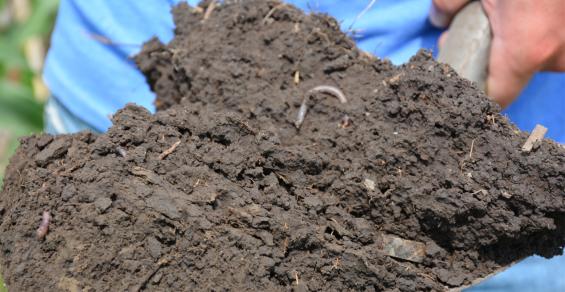Building organic matter has multiple benefits for growers.
Soil tests provide farmers a lot of information, but what does that information mean?
Brian Hefty, CEO of Hefty Seed Co., said at a recent Ag Ph.D. Field Day that the first number producers should look at on a soil analysis is pH, with a number between 6.3 and 6.8.
And more often than not, soil pH does not fall in that range, according to senior agronomist Rob Fritz at Hefty Seed.
“You find out that pH is just a symptom of whatever else is happening in your soil, but it’s still important, and it’s No. 1 on our list for a reason,” Fritz said. “Because if you notice it, it’s going to tell you if you’re too low, you have a lime problem. And if you’re too high, something else is out of balance.”
Producers with high soil pH levels often look for a quick fix, but Hefty said it’s not that easy. “It’s probably not going to be an immediate change if your pH is high, but are there things we can do? Absolutely. We just have to figure out what’s wrong; what’s caused our pH to go high,” he said. “It could be excess magnesium, could be excess sodium. It’s probably excess of something. And it could also in some cases be that you’re short on something.”
Hefty related a situation in one of their operation’s fields where pH was in the 8s. “We put drain tile in, and we put a whole bunch of potash on to take the base saturation K from really low to up around 4%,” he said. “And you know what happened magically? pH came down. A big cause of the pH being high [was] we had things out of balance, out of ratio in that soil.”
Hefty and Fritz gave field day attendees a quick overview of what they see as the important nutrients and numbers from soil tests, and here are a couple highlights.
Cation exchange capacity
Fritz talked about the importance of cation exchange capacity in determining soil type, as in sandy soil or heavy clay soil. He explained that CEC shows the type of clay and the amount of clay in the soil’s organic matter. “It’s an indication of the holding capacity that your soil can have to hold nutrients and hold water,” he said.
The higher the number, the higher the holding capacity. The soils at the Hefty operation near Baltic, S.D., have a CEC value of 20, which Hefty said is considered a “heavy” soil.
Hefty stressed the importance of finding a soil’s CEC value; otherwise, farmers can speak of heavy soil or light soil, which can be subjective and relative.
Hefty recalled a conversation he had with a Canadian farmer. The farmer asked Hefty to assess his “light, sandy ground.” However, that “light” soil had a 33 CEC, which caused Hefty to respond, “This isn’t light, sandy soil.” The farmer replied, “No, that’s my light sandy soil. Here’s my heavy soil,” which had a CEC of 41.
Hefty described these soils and their CEC values:
light-colored sands, 3 to 5 CEC
dark-colored loams and silt loams, 15 to 25 CEC
dark-colored silty clay loams and silty clays, 30 to 40 CEC
That’s the reason Hefty said a CEC value is needed to remove subjectivity, as well as giving producers an idea of how much nitrogen their soil can hold. Multiplying a soil’s CEC by 10 equals about the maximum nitrogen a soil can hold.
Organic matter matters
Fritz said organic matter levels on soil tests in recent years have been trending higher, “because of the way we’re tilling. Organic matter has an effect on the CEC, but it also has a really high effect on how much water your soil can hold.”
Hefty said every 1% increase in a soil’s organic matter allows it to hold 4% more water.
Fritz says that while organic matter is an important component of healthy soil, it is also the “smallest piece of the soil that you can actually have. It’s not the residue you’re seeing in the field. It’s not the residue that’s laying on the surface. It’s not even from the stalks. Most of it actually is from the root material as it breaks down.”
Building organic matter is beneficial in more than simply improving soil health. “The fact of the matter is a lot of people want to pay us as farmers to sequester carbon, and how we do that is by building soil organic matter,” Hefty said.
He suggested the steps to building organic matter is to first reduce tillage. No. 2 is to plant crops with lots of roots. “Corn, for example, has five times the root mass of soybeans. You can build soil organic matter much faster with corn than beans, he said.
Applying manure or compost will help build a soil’s organic matter, as will cover crops and some biological products, Hefty said.
While organic matter is good, Hefty reminded farmers that soil organic matter is constantly mineralized. “So we run into people saying, ‘Well, we’ve got all this nitrate that’s ending up in the water. It’s got to be from farmers.’ No, it does not,” he said. “A lot of it is just because the soil is constantly releasing nitrogen year-round. As that soil organic matter breaks down, nitrogen gets released.”
He estimated that for every 1% of organic matter in the soils on the Hefty operation, 20 to 30 pounds of nitrogen get released per year. “We have some soils here that are 5% organic matter, so that’s 100 to 150 pounds of nitrogen that are released every single year.”





